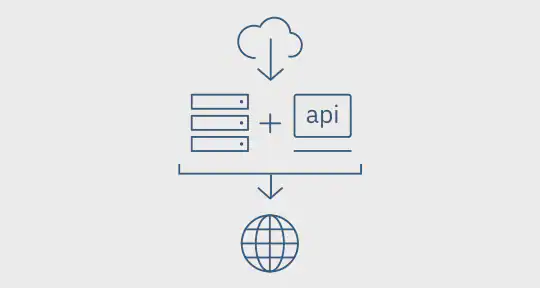A cloud database is a database service that is produced and accessible via the internet. It performs many of the same tasks as a traditional database, but with the extra benefit of cloud computing flexibility. To implement the database, users install software on a cloud infrastructure.

Key features:
- A cloud-based database service that may be accessed from anywhere.
- Allows business customers to host databases without having to purchase dedicated hardware.
- It can be controlled by the user or it can be provided as a service and managed by the supplier.
- Supports both relational and non-relational databases.
- Accessed via a web interface or an API given by the vendor.
Benefits of Cloud Database
Many of the same benefits other cloud services are available with cloud databases, including:
Improved agility and innovation
- Cloud databases can be set up and decommissioned quickly, making it simple and quick to test, validate, and operationalize new business concepts. If a company decides not to operationalize a project, it can simply drop it (along with its database) and move on to the next innovation.
Time to market is reduced
- When a new product is in the development queue, there’s no need to order hardware or wait for shipments, installation, or network configuration when using a cloud database. Access to the database can be obtained in a matter of minutes.
Reduced risks
- Cloud databases, particularly DBaaS models, provide several options to decrease risk across the enterprise. Cloud service providers can employ automation to enforce security best practices and features, as well as reduce the likelihood of human error, which is the most common cause of software downtime. Service level agreements (SLAs) and automated high-availability features can help to decrease or eliminate revenue loss due to downtime. And, because the cloud can be a limitless reservoir of just-in-time infrastructure and services, capacity forecasting is no longer a crucial concern when deploying projects.
Reduced expenses
- Users can prepare for steady state, then scale up for peak demand during busy periods, and then scale back down when demand returns to steady state using pay-per-use subscription models and dynamic scaling. This is far less expensive than keeping similar capabilities in-house, as firms must purchase real servers capable of handling peak demand even if they only use them a few days each quarter. Businesses can save money by turning off services when they aren’t in use. They can also save money by implementing worldwide projects with only a little amount of infrastructure expenditure. In many cases, cloud software automation replaces expensive database administrators (DBAs), lowering operational costs by eliminating the requirement for costly in-house staff.
- Subscription and pay-per-use pricing plans are common for cloud databases. Resource provisioning guarantees that organizations only use what they require. Many services may only be needed for a short period of time or during peak workloads. With cloud database models, businesses can easily turn on and off superfluous services as needed.
- The prohibitive costs of in-house infrastructure are eliminated with DBaaS automation. However, it also minimises or eliminates the workload of database administrators. Cloud service automation handles oversight duties like maintenance and management.
Speed of operation
- Users connect to the nearest data center using a cloud database service. For high performance, cloud computing resources are provisioned in real time. Furthermore, real-time scalability smoothly manages peak loads while ensuring maximum performance for mission-critical activities. Cloud databases allow businesses the most flexibility in dealing with changing business demands. Increased user workloads can be ramped up nearly instantly to handle peak times. Companies that are experiencing rapid growth, on the other hand, will be able to scale operations quickly and effectively.
